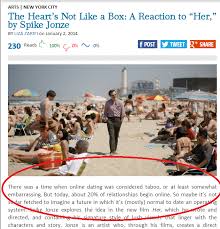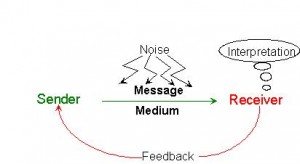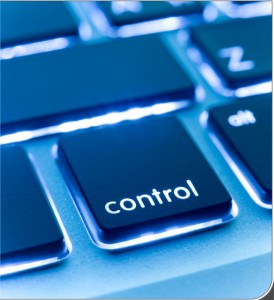What Is the Lede?
The lede (that’s how journalists spell it) is the first paragraph of any news story. It’s also the most important. A “LEAD” is something that will answer the questions of who, what, when, where, why, and how of the readers. A good “LEAD” is a brief of the story you are about to read. “LEADS” can be of many types and here I point a few types.
The lede must accomplish several things:
- give readers the main points of the story
- get readers interested in reading the story
- accomplish both “a” and “b” in as few words as possible
Typically editors want ledes to be no longer than 35-40 words. Why so short? Readers want their news delivered quickly. A short lede does just that.
What Goes in the Lede?
Journalists use the five “W’s and the H” – Who, What, Where, When, Why and How.
- Who – who is the story about?
- What – what is the story about?
- Where – where did the event you’re writing about occur?
- When – when did it occur?
- Why – why did this happen?
- How – how did this happen?
Example:
Let’s say you’re writing a story about a man who was injured when he fell off a ladder. Here are your five W’s and H:
- Who – the man
- What – he fell off a ladder while painting
- Where – at his house
- When – yesterday
- Why – the ladder was rickety
- How – the rickety ladder broke
So your lede might go something like this:
A man was injured yesterday when he fell off a rickety ladder that collapsed while he was painting his house.
KIND OF LEDES:
} The lede, or the first sentence of the story, is arguably the most important part of the article.
} Based on the content of that first sentence, a reader will either look deeper into the story, or move on to the next one
} A Lede actually gives an idea about what the following story is all about.
} It also helps in creating an interest of the reader in a particular story.
HARD AND SOFT LEDES:
Ledes are of two types: Hard & Soft
} Hard ledes state in a direct way about what happened.
} It provides a readable, straightforward statement of the information the writer has decided is most important to be mentioned before.
} It answers the questions posed by the “Five 5 Ws and H:
-What happened?
– When did it happen?
– Where did the incident take place?
– Who was involved?
– Why- the causes?
– How- the reason?
Broadcast and Radio Ledes:
} Soft Broadcast: Ledes – Delays the main news until the listener is primed to the subject and really listening
Examples –
◦ Hard Lede: Seven members of Mahendra Singh Dhoni’s team were among 15 people injured on Saturday when the bus they were travelling in, was involved in an accident on the Expressway
◦ Soft Broadcast/Radio Lede: Mahendra Singh Dhoni is in shock today. His vice captain and six other members of his team are injured in an accident on the Expressway
Single Incident ledes:
} Single incident ledes focus on one incident
A 21-year-old media student was killed when she was struck by a speeding car, while crossing the Kharghar, central park road in Pune, on Tuesday.
The Pune Police has arrested four people on Sunday, in connection with a series of robberies and involving into illegal activities near CP.
Multi-incident ledes:
} Multi-incident ledes give equal weight to a variety of elements
The Indian Army said on Sunday, that no date had been set for a massive ground offensive in the Maoist-infested region of Chhattisgarh, and the Centre said it would reject any peace plan calling for a cease fire.
Umbrella ledes:
} Umbrella ledes make a general statement about the elements that will follow, or a statement that broadly covers what is to come
◦ Like a noisy bunch of school children squabbling over a chocolate bar, members in the Lok Sabha passed at least 10 bills, as Parliament began its winter session on Tuesday.
Feature ledes:
} Feature ledes, sometimes called delayed leads, unfold more slowly.
} They allow the writer to tell a story in a more traditional, narrative and descriptive way.
} The objective, of course, is to draw the reader into the story, to make them want to read more.
} Feature ledes often begin by setting a scene or painting a picture – in words – of a person or place.
Descriptive ledes:
} A descriptive lead describes how an event happened rather than simply telling what the event is about.
◦ MUMBAI: Aishwarya Rai Bachchan slowly counted to five, snapped into a hypnotic trance, and gave birth to an eight-pound baby. It was as easy as that.
} Eyewitness accounts can provide the background for writing lucid descriptions which help the reader to visualise a news situation.
◦ An ominous silence, broken only by the call of a faraway bird, hung over the battle-scarred hills when suddenly an explosion followed by the yells of charging troops smashed the stillness
Quotation ledes:
} Quotes frequently are the essential documentation for a lead and should be used immediately after a paraphrase that summarises them.
} Here paraphrasing the verbatim quotation permits the removal of unnecessary words.
} But if a verbatim quotation itself is very important or interesting, it can be the lead itself.
} This lead would add an element of interest such as drama, pathos, humour, astonishment, or some other factor that will reach out to the reader.
Question ledes:
Many editors dislike question lead on the basis that people read newspapers to get answers, and not to be asked questions. But if the question is provocative, it may be used as a lead.
What is the first thing that a woman buys when she is told that she won Rs 2, 50,000 in a jingle contest?
Mrs. Jane Roe informed by XYZ Soaps that her entry took top prize in the nationwide contest, said that she will buy a rhyming dictionary that…
Personal ledes:
It involves the use of the first person singular in the lead. Normally such a use is discouraged except for a columnist or such privileged writers.
When the tall, dark, smartly dressed stranger appeared at the door, it was clear this was trouble.
He said, “I’m Pierce Bronson,” in a clipped accent quickened by exposure to speech patterns elsewhere.
You ledes:
- The `You’ lead is intended to make a personal appeal to the reader involved in a complicated situation.
- The second-person approach reaches out to involve the reader and capture his/her attention.
- Here is an example, fairly typical of a trend toward consumerism in the news:
New Delhi (PTI) — If you are one of 30 million Indians working for companies with a private pension plan, The Government has given you a new Act. It is the Employment Retirement Income Security Act and it promises that if you have worked long enough to earn a pension, you will receive one at retirement age. Nothing — including bankruptcy, plant closings, dismissal or resignation — can stand in the way.
Contrast ledes :
To vary monotony, a saga can be split into two sentences — the first of which refers to the humble beginning and the second to the hero’s latest triumph.
When Kabir Bedi, the actor, returned from a triumph in Italy, one reporter wrote:
Kabir Bedi of Mumbai came home from Italy today with 17 pieces of luggage. They bespoke his triumph as actor in Italy. He had three when he went over.
Anecdotal Lead
Crating a situation, telling a story, introducing characters and affixing them with a story are what an “Anecdotal Lead” is all about.
Example- “Monday morning I reached the class to see all the students playing, some rolling in the ground, some chatting , it seemed like a festival to them the teacher was absent”.
Allusion Lead
Literally creating an allusion, comprising history, quotes, motto’s, familiar sings and words that fall into the same line. The reference is always suitable to the subject of the copy.
Example- “There is no monopoly over the trophy; it is the worthy and the deserving who wins it. Hard work, dedication and perseverance wins, history is made. India wins the “World Cup”.
Exclamatory Lead
A striking message, “Exclamatory Lead” is something containing exclamatory sentences with startles the readers.
Example- “The Republic Day Parade is a previous day for the country and being able to witness the parade is the luckiest thing for an Indian!”
Suspended Interest Lead
“Suspended Interest Lead” arouses reader’s curiosity, reveals only a part. It develops temptations.
Example – “Sonal Mansingh” resigned as the Finance Minister, reasons vague.
Summary Lead
“Summary Lead” is the most common lead used, mostly in newspapers. It strictly follows the rule of 7 WH questions and just states the facts.
Example – Indian Airline’s A302 crashed near the London airport, 2 dead 30 injured out of the 80 passengers. Prime Minister releases his statement.
Punch Lead
A “Punch Lead” is direct, strong words, brief and to the point.
Example – “Peace maker shot dead, Gandhi assassinated”.
Quotation Lead
“Quotation Lead” is a direct quotation; the quote must set the stage for the copy, one of the most overused leads because it’s an easy solution.
Example – “The Ministry is in constant contact with the Swedish Embassy and will come up with a solution very soon”, said Salman Khurshid, Minister of External Affairs on the recent issue of racist attacks on Indian students studying in Sweden.
Contrast Lead
“Contrast Lead” is a narrative of two extremes or opposites. “Contrast Lead” generally used to make comparisons between two entities.
Example – “A 1950 book is preferred over a 2012, here the 90 year old guides the 20 year old for a research, here many different generations have come and gone. The Asiatic Library a living legend”.





3 Comments. Leave new
Great effort! You explained almost everything..
very well explained
well written but too long